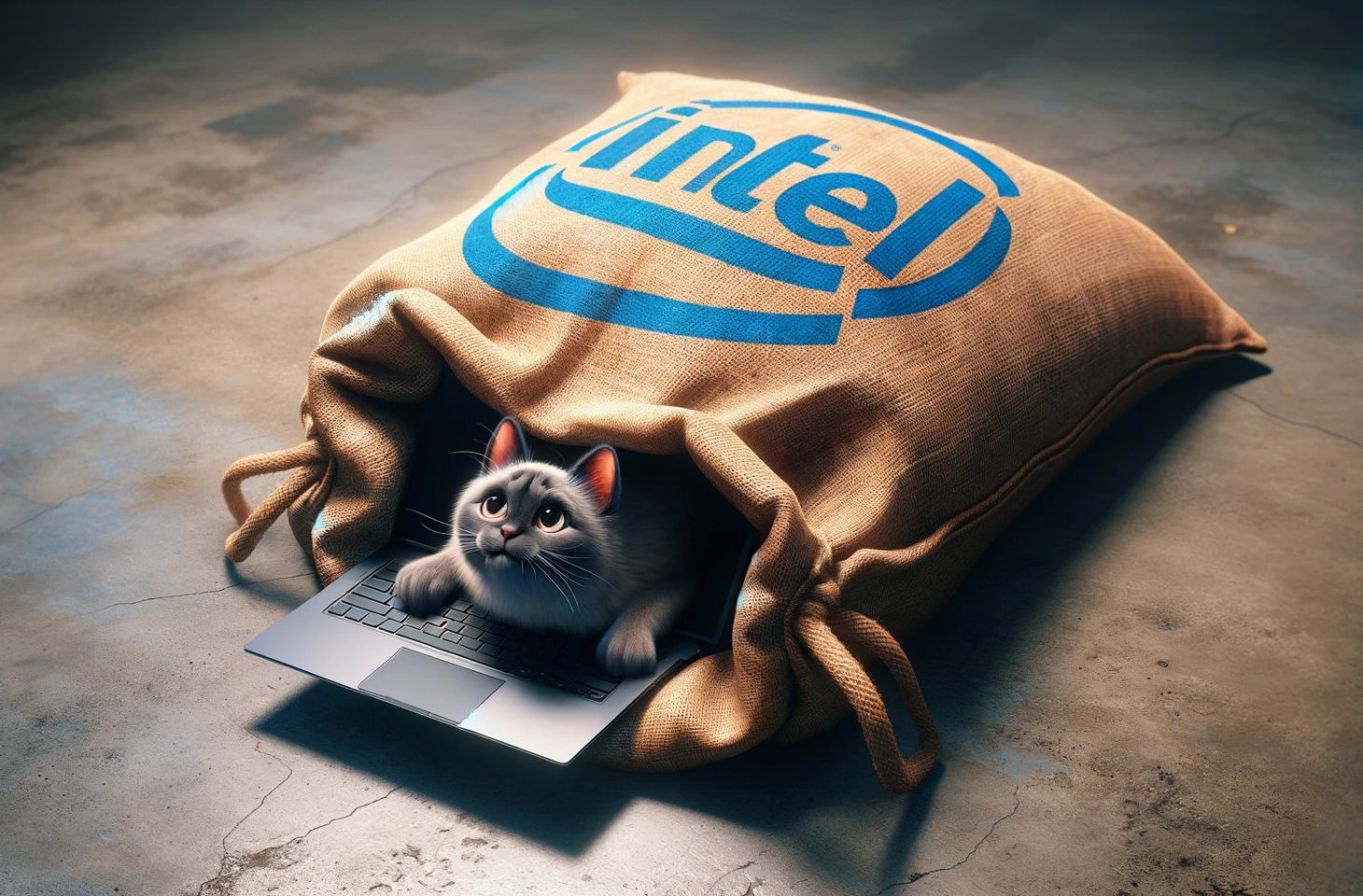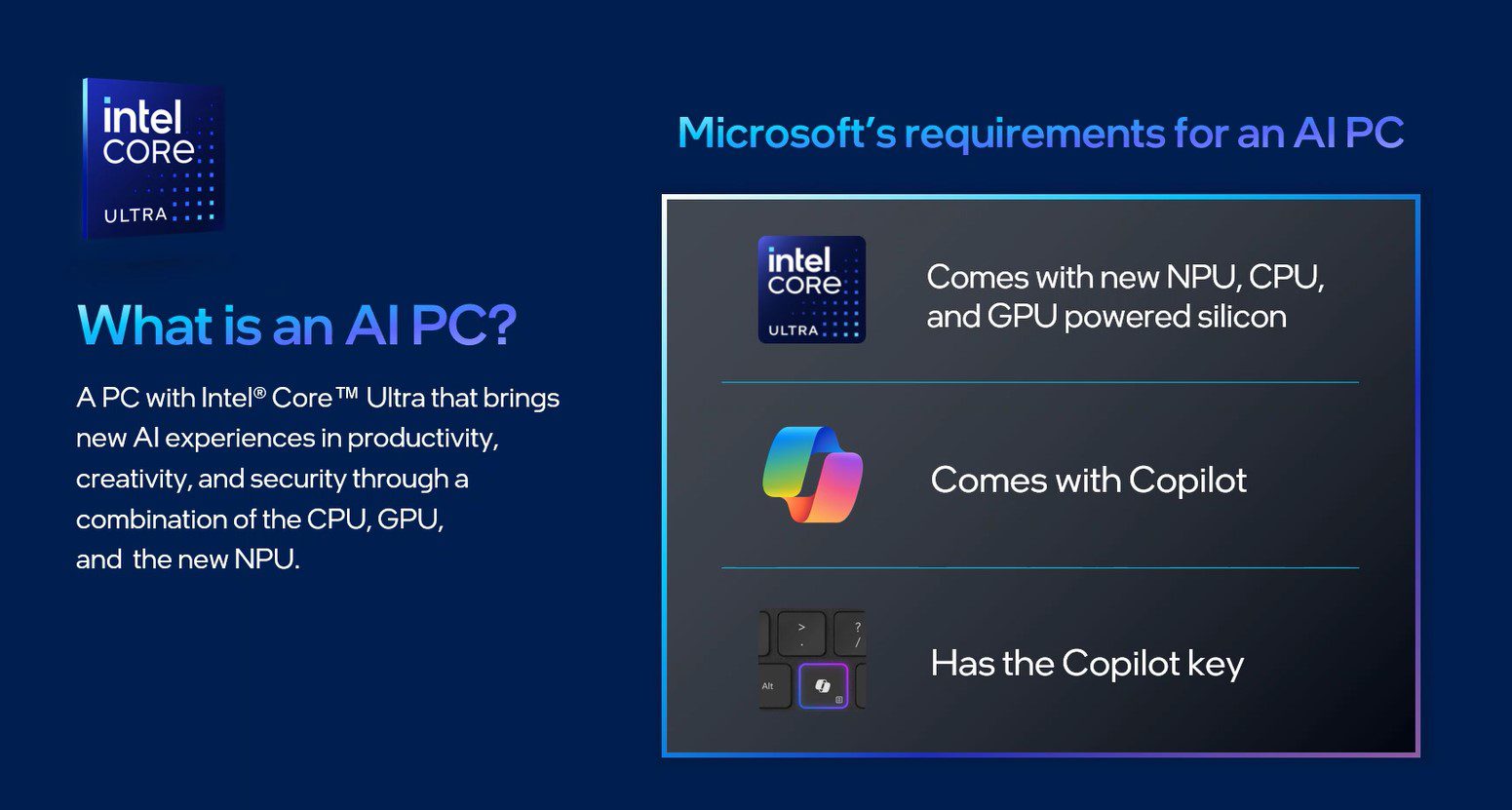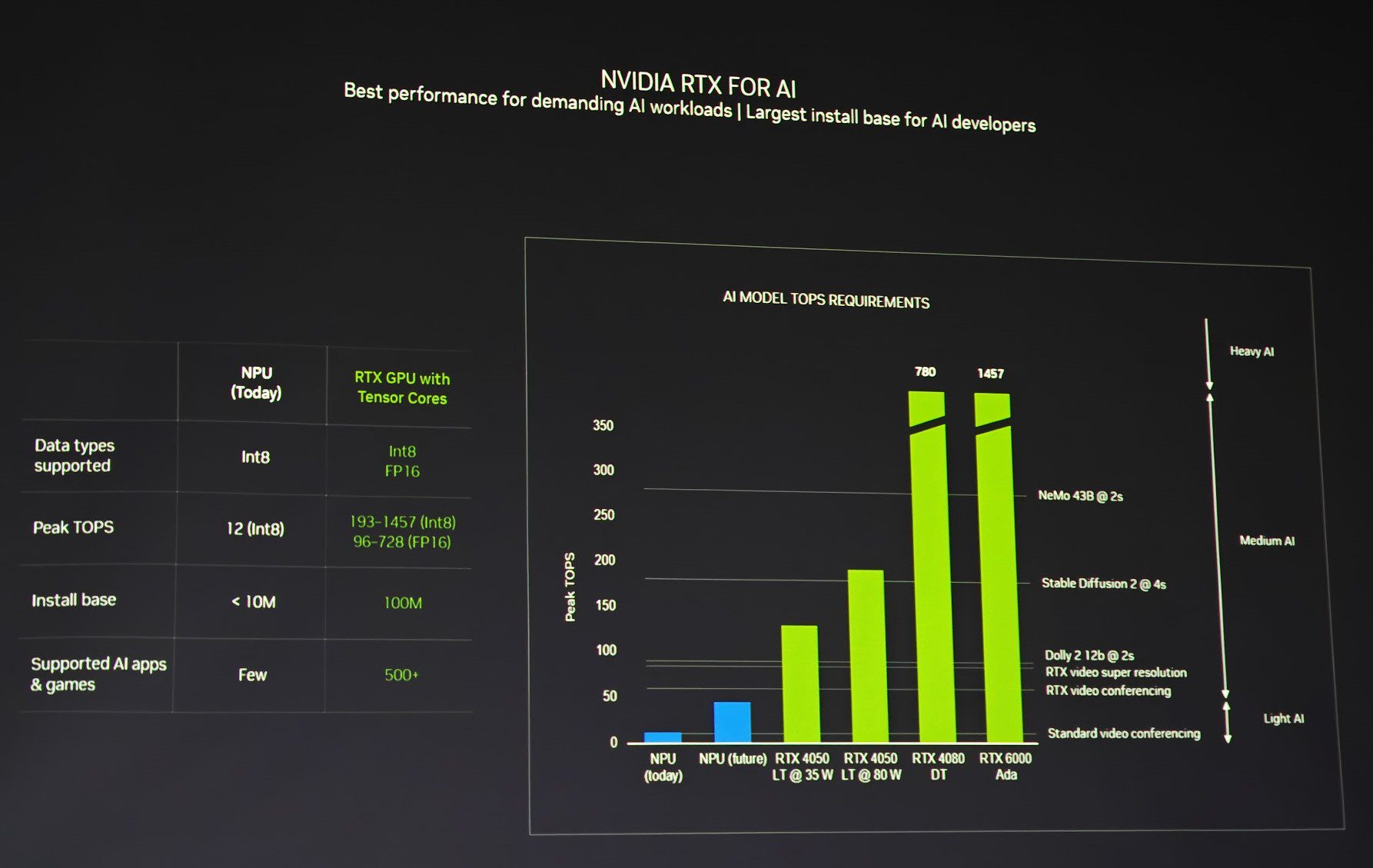According to Microsoft, no new AI PC is yet a true AI PC
- April 4, 2024
- 0
While manufacturers have flooded us with new AI PCs in recent months, according to Microsoft’s definition and minimum requirements, no device without a discrete GPU is truly an
While manufacturers have flooded us with new AI PCs in recent months, according to Microsoft’s definition and minimum requirements, no device without a discrete GPU is truly an


While manufacturers have flooded us with new AI PCs in recent months, according to Microsoft’s definition and minimum requirements, no device without a discrete GPU is truly an AI PC.
Dell announced a new line of AI PCs at MWC. Lenovo has already brought several AI PCs onto the market, MSI also brought them onto the market and HP is also involved. AI PCs have one thing in common: they contain a new Intel Core Ultra chip with an NPU at the top. AMD also equips its Ryzen Mobile processors with an NPU and was therefore even faster than Intel, but did not instruct its marketing department to shout the AI PC term from the rooftops.
Intel does this, and laptop manufacturers that market Intel laptops are eagerly adopting this strategy. Since the end of last year, we’ve been hearing from all sides how we’ve entered a new era of laptops. You may already have a PC, but you probably don’t have one yet AI-pcs. So just buy one.
Or not. Because if you want an AI PC, you’ll have to wait a little longer. Early investors buy a pig in a poke. Finally, Microsoft uses its own definition of an AI PC and it is clear: In addition to 16 GB of RAM, a device must also have 40 TOPS of computing power. TOPS stands for Tera operations per second and is a measure of the number of operations a piece of hardware can perform per second. AI-related workloads include INT8 tops, where INT8 stands for 8-bit integer and refers to a data type relevant to AI inference.
You don’t have to be an AI scientist to get the gist: According to Microsoft, if a computer has 16 GB of RAM and 40 TOPS of processing power, it is an AI PC. If the computer has less processing power (or RAM), Microsoft does not consider it an AI PC. Since all so-called AI PCs come onto the market with Microsoft Windows on board, Redmond’s definition seems relevant to us.
The minimum requirements are also important: Intel recently announced that Microsoft plans to make AI functionality work locally on your laptop via Copilot. However, you need an NPU with 40 TOPS for this. And a copilot button: That’s obviously important too.

The minimum requirements are not new. Trendforce communicated it in January and a little later we saw slides with similar information from an important manufacturer. Now Intel also confirms the specifications. One party remains surprisingly silent: Microsoft itself. Despite repeated insistence, Microsoft was reluctant to make any comment on the specifications.
We can speculate about the reason for this. The fact is that the term “AI PC” turns out to be a serious farce. We’ve previously described why we think the whole term is redundant, but it won’t go away immediately. Intel is pushing hard on the marketing pedal. If you buy into the story, you are buying a PC that actually has limited ability to run important AI applications and cannot run Copilot locally.
In addition, Intel is already planning to launch a new line of processors this year with NPUs reaching 40 TOPS. AMD’s new copies are also not yet available, but will reach 39 TOPS. If you buy a computer now with the idea of upgrading to an AI PC, you’re investing in Intel’s marketing story, not AI computing power. In fact, all so-called AI PCs are currently not the first devices of a new generation, but the last of an old one. The NPU is already there, but the processing power to really make a difference is missing.
There are exceptions: Anyone who buys a computer with a current discrete graphics card from Nvidia (or AMD) will achieve the famous 40 TOPS and even significantly exceed it.
Nvidia is well aware of this. In his own slides, the GPU specialist divides AI workloads into light, medium and heavy. According to Nvidia’s assessment, current NPUs from Intel (and AMD) barely meet even the most minimal requirements. The future generation will perform better. Unsurprisingly, Nvidia notes that even a relatively light Geforce RTX 4050 is enough to break the 40 TOPS barrier towards mid-range AI requirements.

We’re starting to understand why Microsoft doesn’t want to comment too much on system requirements. The key partner Intel actually made a false start by selling AI PCs even though they don’t yet exist in a relevant form. One can argue that some niche functions in applications like Photoshop already run more efficiently with an NPU, but the average end user won’t notice much of it. Finally, the same functions also work without an NPU.
To reach its goal of 100 million AI PCs sold by 2025, Intel is choosing to broaden the definition of AI PCs. The fact that enthusiastic buyers today are being persuaded to buy a system that isn’t compatible with all of tomorrow’s AI gadgets doesn’t seem to bother Intel that much.
It’s hard to predict what AI workloads will run locally in the future, but let’s look at Nvidia for a moment. Then we can call systems with 100 TOPS or more really relevant for AI: they can perform functions that are not possible on the CPU. 40 TOPS systems, such as those powered by future chips from Intel and AMD, are AI light: they can accelerate workloads and are sufficient for some copilot (or related) functions.
Today’s AI PCs with their NPUs of around 10 TOPS are more like homeopathic AI: just real believers will have something from it. The 10 TOPS are enough to speed up very specific functions, but almost all of these functions also work without an NPU. Is it responsible today to market a laptop without a GPU as an AI PC?
The solution to this whole dubious business seemed to be some kind of label. In a manufacturer presentation we saw a distinction in style full AI And AI ready, although we haven’t heard anything about this plan since. The proposed labels illustrate the divergence required to refer to both today’s and tomorrow’s PCs as AI PCs. Feel free to compare the design with the Full HD and HD Ready at the time. There, HD Ready essentially meant: not really high resolution. The same applies to AI PCs. The currently commercially available non-GPU devices are not really ready for AI.
Source: IT Daily
As an experienced journalist and author, Mary has been reporting on the latest news and trends for over 5 years. With a passion for uncovering the stories behind the headlines, Mary has earned a reputation as a trusted voice in the world of journalism. Her writing style is insightful, engaging and thought-provoking, as she takes a deep dive into the most pressing issues of our time.